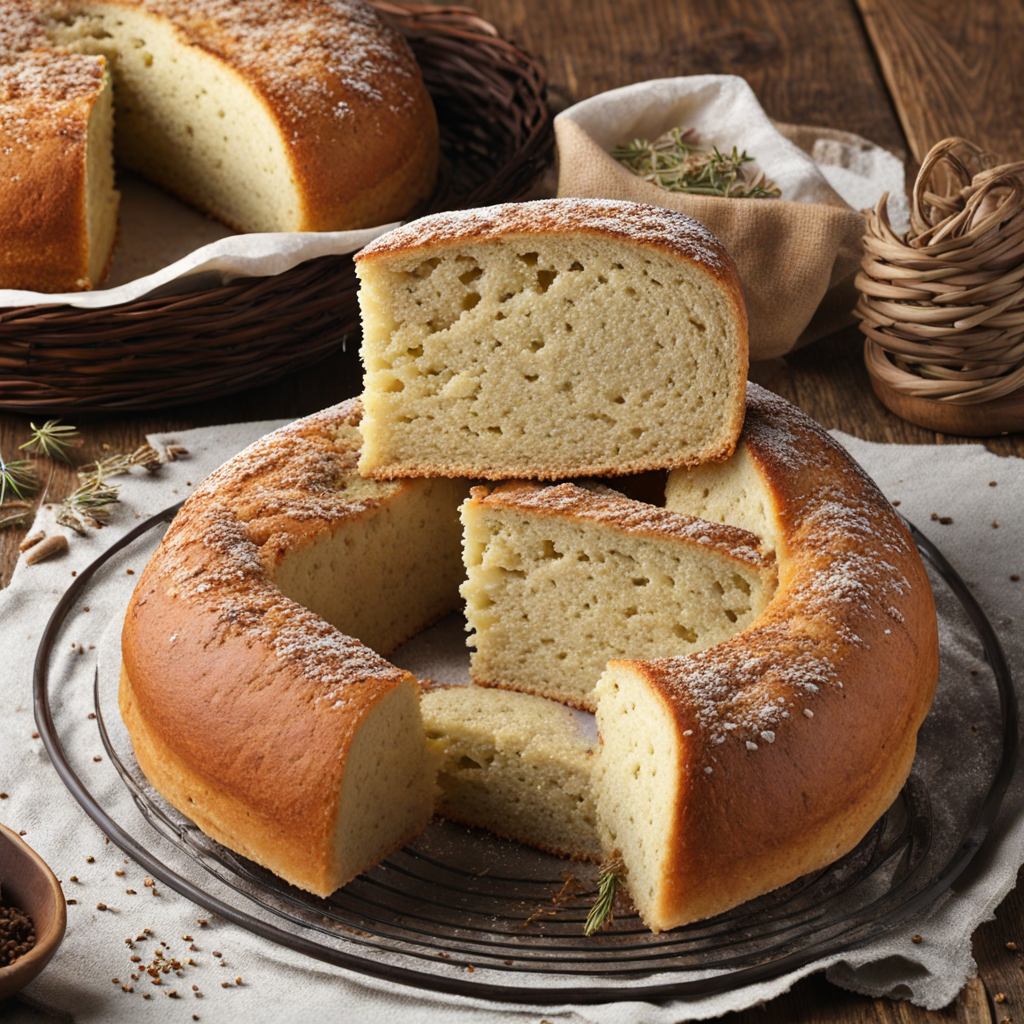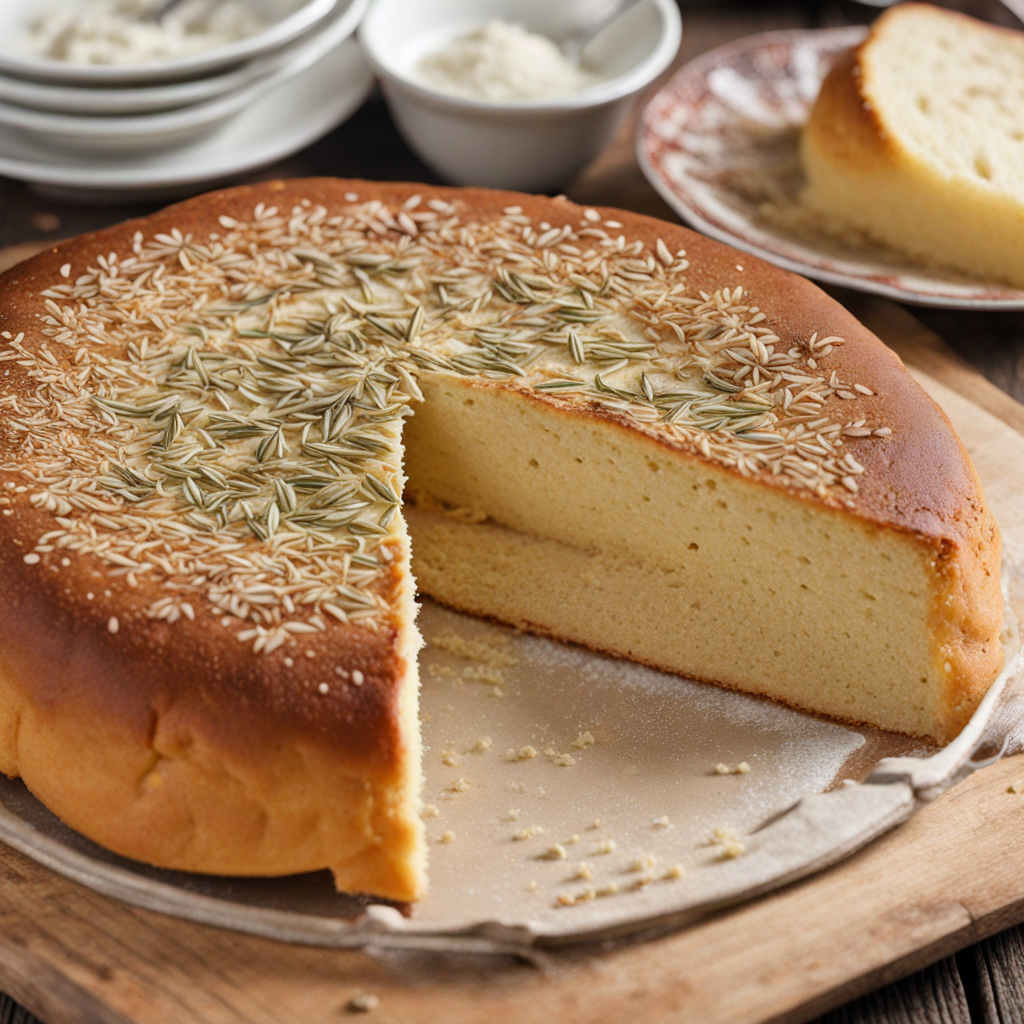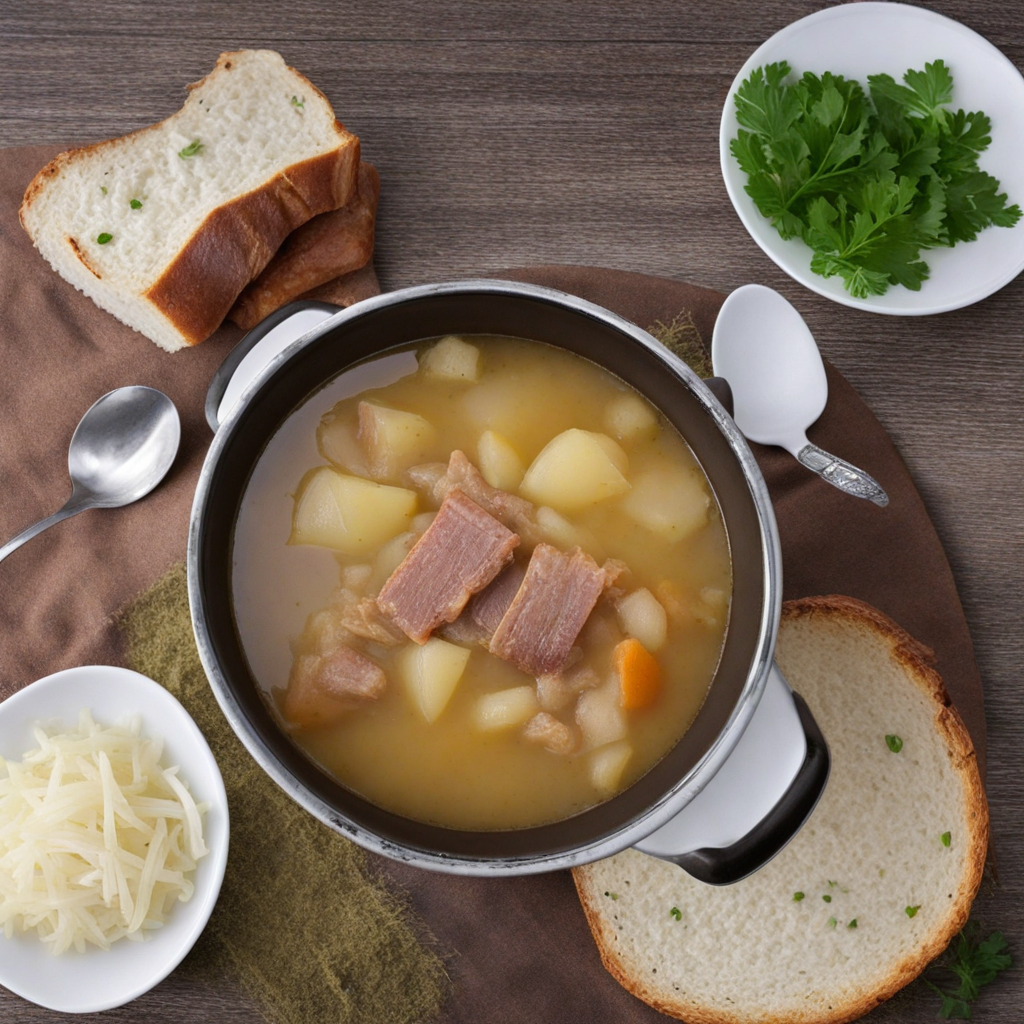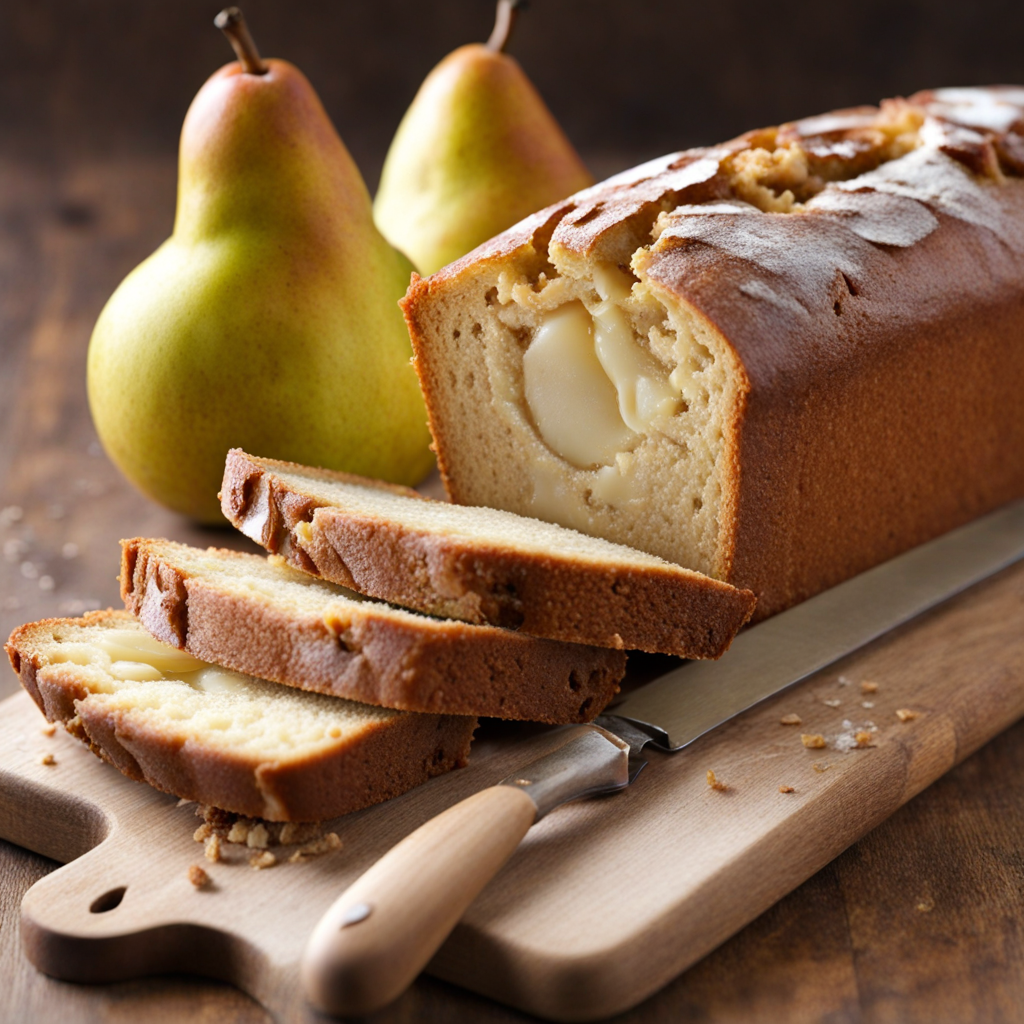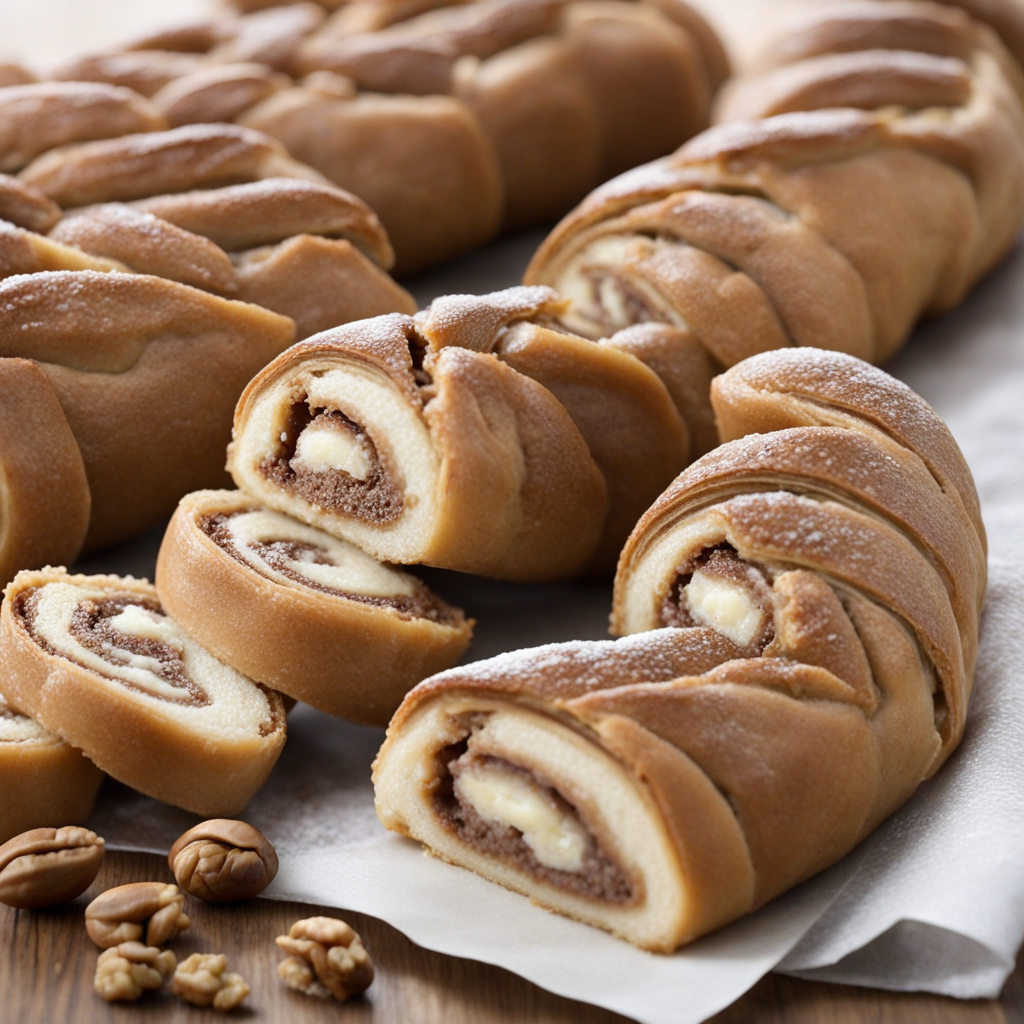Belokranjska Pogača
Belokranjska Pogača is a traditional Slovenian flatbread that hails from the picturesque region of Bela Krajina. This delicately crafted dish is not only a staple in local cuisine but also a celebration of the area's rich agricultural heritage. The flatbread boasts a golden-brown, crispy exterior, while its interior is soft and slightly chewy, creating a delightful contrast in texture. The dough is traditionally made from simple ingredients such as flour, water, salt, and yeast, allowing the natural flavors to shine through. One of the defining features of Belokranjska Pogača is its unique topping—a generous sprinkle of caraway seeds that lends a fragrant, earthy aroma and a hint of nuttiness to each bite. This aromatic addition complements the mild flavor of the bread and elevates its overall taste experience. Often enjoyed as a snack or side dish, the pogača is versatile and pairs beautifully with various Slovenian delicacies, such as cured meats, cheeses, or even a simple spread of local butter. The cultural significance of Belokranjska Pogača extends beyond its flavor; it is often served during festive occasions and family gatherings, embodying the warmth and hospitality of Slovenian traditions. Each bite not only offers a delightful taste but also a connection to the region's history and communal spirit. For those looking to explore new culinary horizons, Belokranjska Pogača promises to be an unforgettable experience that encapsulates the essence of Slovenian gastronomy.
How It Became This Dish
Belokranjska Pogača: A Slice of Slovenian Heritage The Belokranjska pogača, a traditional flatbread hailing from the Belokranjska region of Slovenia, is more than just a delightful culinary treat; it is a testament to the rich cultural tapestry, history, and agricultural practices of the area. This round, often decorated bread encapsulates the spirit of a community, reflecting the bonds of tradition, seasonal changes, and the importance of food in Slovenian social life. Origins The roots of Belokranjska pogača can be traced back centuries, with its origins entwined with the agricultural practices of the Belokranjska region, located in southeastern Slovenia. This area is characterized by its fertile soil and lush landscapes, which have historically supported a variety of crops and livestock. The name “Belokranjska” translates to “White Carniola,” which is indicative of the region’s white limestone hills and rich agricultural heritage. Belokranjska pogača is believed to have originated as a peasant food, created from readily available ingredients like flour, salt, and water. It was a practical solution for farmers and laborers who needed sustenance that was both portable and filling. Traditionally made with wheat flour, the dough is often enriched with sour cream or milk, producing a soft and flavorful bread. The inclusion of caraway seeds, a common spice in Slovenian cuisine, adds a distinctive aroma and taste, enhancing its appeal. Cultural Significance Beyond its basic sustenance role, Belokranjska pogača holds deep cultural significance. It is often associated with communal gatherings and celebrations, serving as a centerpiece in various festivities. One of the most notable events is the “Pogača Festival,” held in the town of Metlika, where locals and visitors alike come together to celebrate this beloved bread. The festival showcases different variations of pogača, highlighting the creativity of local bakers and the enduring traditions of the region. In addition to celebrations, Belokranjska pogača is often prepared for significant life events, such as weddings, christenings, and family gatherings. It symbolizes hospitality and abundance, reflecting the Slovenian ethos of sharing food as a way to foster connections and strengthen community ties. The bread is typically served with a variety of accompaniments, such as cured meats, cheese, and local wines, further emphasizing the importance of food in Slovenian culture. Development Over Time As Slovenia emerged as an independent nation in the early 1990s, there was a renewed interest in traditional foods, including Belokranjska pogača. This resurgence was part of a broader movement to reclaim and celebrate national identity, where food played a vital role in expressing cultural heritage. The bread became a symbol of Slovenian pride, representing the unique culinary traditions that distinguish the country from its neighbors. In recent years, the development of Belokranjska pogača has also been influenced by modern culinary trends. Artisanal bakers in Slovenia have begun experimenting with variations, incorporating different flours, such as spelt or rye, and adding unique toppings, including seeds or herbs. While these adaptations have introduced innovative twists to the traditional recipe, the essence of Belokranjska pogača remains intact, honoring its roots while embracing contemporary tastes. Furthermore, the global interest in regional and artisanal foods has contributed to the growing popularity of Belokranjska pogača beyond Slovenian borders. It has found its way onto menus in gourmet restaurants, food festivals, and international culinary events, introducing a wider audience to this cherished Slovenian bread. This globalization of local cuisine has allowed for greater appreciation of Slovenia's rich food heritage, fostering a deeper understanding of its cultural significance. Preparing Belokranjska Pogača The preparation of Belokranjska pogača is an art form that reflects the simplicity yet sophistication of Slovenian baking traditions. To make this traditional bread, one starts with high-quality flour, which is then combined with yeast, salt, water, and sometimes sour cream or milk to create a soft dough. The dough is allowed to rise until it doubles in size, symbolizing the nurturing aspect of food preparation. Once the dough has risen, it is shaped into a round loaf and transferred to a baking tray. The surface is often adorned with intricate patterns, typically made using a knife or other tools, which not only enhance its visual appeal but also serve functional purposes, allowing steam to escape during baking. This decorative technique is rooted in tradition, with each design often carrying its own meaning or symbolism. The bread is then baked until golden brown, filling the air with a tantalizing aroma that beckons to all. When cooled, it is typically enjoyed fresh, either on its own or paired with various accompaniments. In many households, it is customary to share the bread with neighbors and friends, reinforcing the communal aspect of its consumption. Conclusion Belokranjska pogača is more than a mere food item; it embodies the history, culture, and spirit of the Belokranjska region of Slovenia. From its humble origins as a peasant food to its status as a symbol of national pride, this traditional bread has evolved while remaining rooted in its cultural significance. The ongoing celebration of pogača through festivals and gatherings illustrates the enduring connection between food and community, reminding us of the importance of sharing and nurturing relationships through the simple act of breaking bread together. As Slovenia continues to navigate the complexities of modern culinary landscapes, Belokranjska pogača remains a beloved staple, a slice of history that enriches the country’s identity and serves as a bridge between generations. Whether enjoyed at a festive celebration or a simple family meal, this traditional bread continues to bring people together, fostering a sense of belonging and continuity in an ever-changing world.
You may like
Discover local flavors from Slovenia


